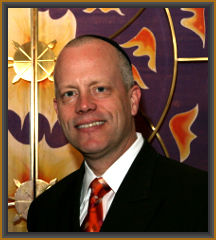
 |
April 16, 2021 Am Yisrael Chai!
Dear Holy Friends, I hope this correspondence finds you doing well and in good health. Please join us for our virtual zoom service this Shabbat. I promise you that the parking will be easy! Presently, we are in the period known as Sefirat HaOmer. In addition to the mitzvah of counting the days between Pesach and Shavuot, this period is known for numerous special days, which are commemorated in the Jewish community. These civic (as opposed to religious) holidays include Yom HaShoah (Holocaust Remembrance Day), Yom HaZikaron (Remembrance Day for Fallen Soldiers) and Yom HaAtzmaut (Israel Independence Day). Modern religious Zionists in Israel refer to these days collectively as Aseret Y’mei T’Shuah (the ten days of salvation). The expression Aseret Y’mei T’Shuah is meant to parallel the more well-known phrase of Aseret Y’mei Teshuvah which marks the period of repentance between Rosh HaShanna and Yom Kippur. While each of these days is important, I have always found it fascinating how Israel transitions from the mourning of Yom HaZikaron on one day to the unbridled joy of Yom HaAtzmaut on the next day. Yom HaZikaron, is marked by a siren, which is sounded throughout the country for two minutes. During the siren, traffic around the country comes to an abrupt halt. Those who were driving stop their car, get out of it, and stand beside it in silence. People at home stand in somber silence on their balconies or in their yards. It is the darkest day of the year on the calendar as there is literally nobody in the country who has not been touched in some way by the loss of a friend or loved one, on behalf of the country. Yom HaAtzmaut, on the other hand, is a time of celebration, parades, dances, ceremonies, and joy. It is the Israeli equivalent of July 4th. Yom HaAtzmaut is clearly the most joyous day of the year on the Israeli calendar. The official “switch” or transition from Yom Hazikaron to Yom Ha’atzmaut takes place a few minutes after sundown, with a ceremony on Mount Herzl in Jerusalem, during which the flag is raised from half-staff to the top of the pole. The president of Israel delivers a speech of congratulations, and soldiers representing the Army, Navy, and Air Force parade with their flags. There is a parade in the evening that is followed by a torch lighting (hadlakat masuot) ceremony, which marks the country’s achievements in all spheres of life. Twelve torches are set ablaze and are reminiscent of the twelve tribes of Jacob, the people of Israel. Then, the party begins! The juxtaposition of the intensity of both mourning and celebration within 24 hours is fascinating. I think it would be almost impossible for an individual to successfully navigate this “switch” by oneself. Rather, I would like to suggest that it is the strength of the community and the strength of unity, which foster the genuine expression of both emotions and allows us to switch from one to the other in such a short period of time. Living here, in the United States, or anywhere else in the diaspora, it is easy to feel disconnected from these important celebrations. We, the Jewish people, however, have always kept our traditions, wherever we are. So, as we celebrate Aseret Y’mei T’Shuah, embrace the spirit of our tradition1 and know that together we are stronger and together we can thrive. Am Yisrael Chai! Shabbat Shalom,
Rabbi Eric L. Wasser, EdD
|